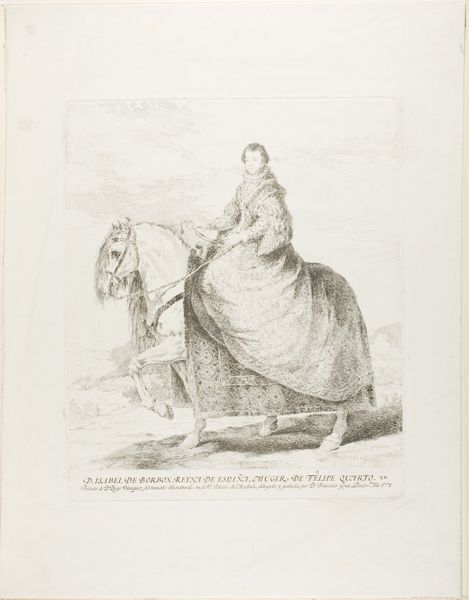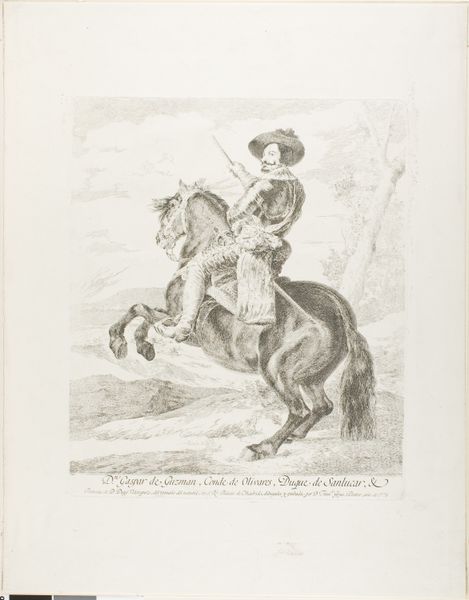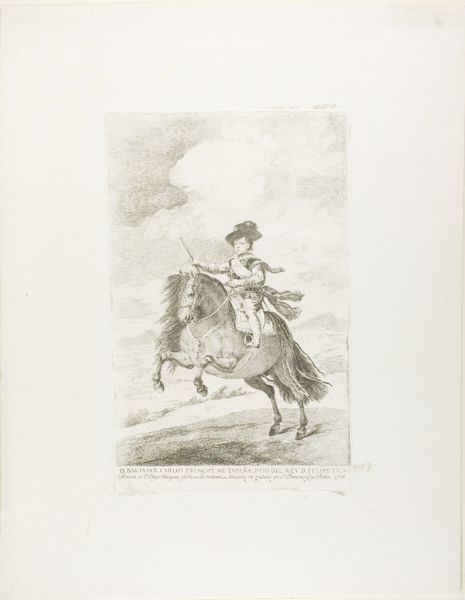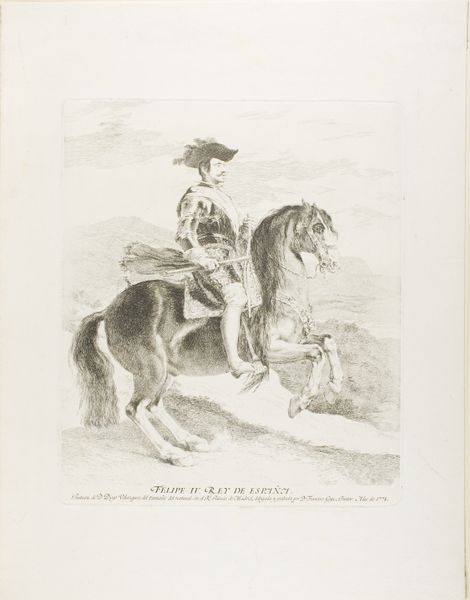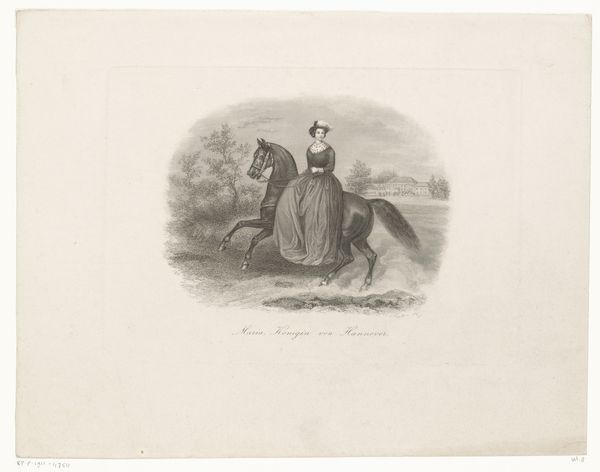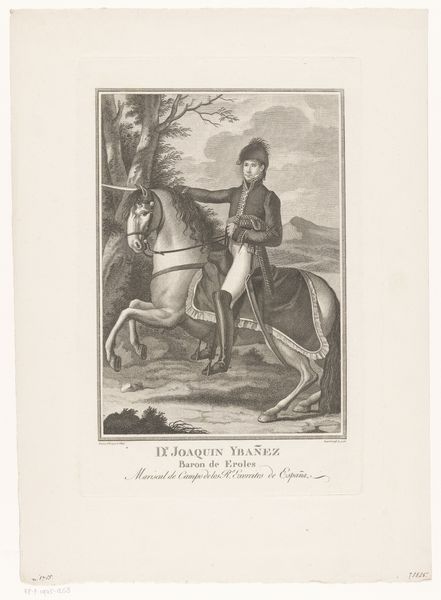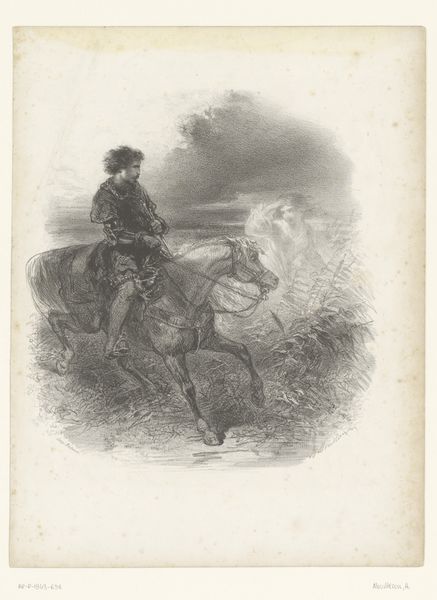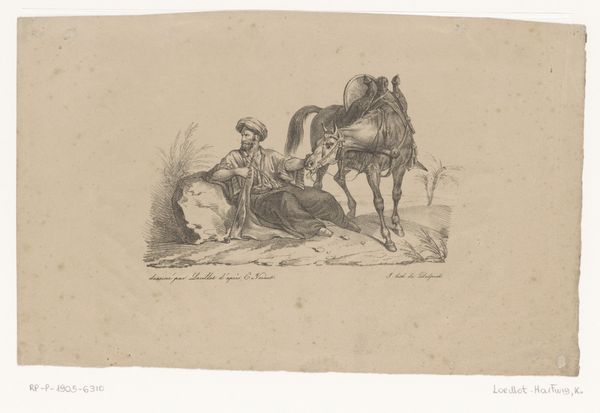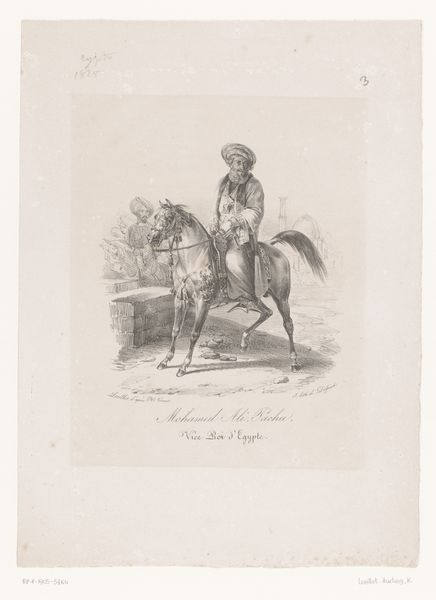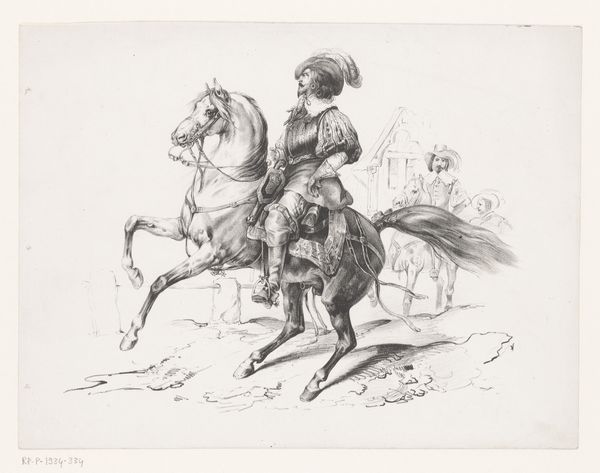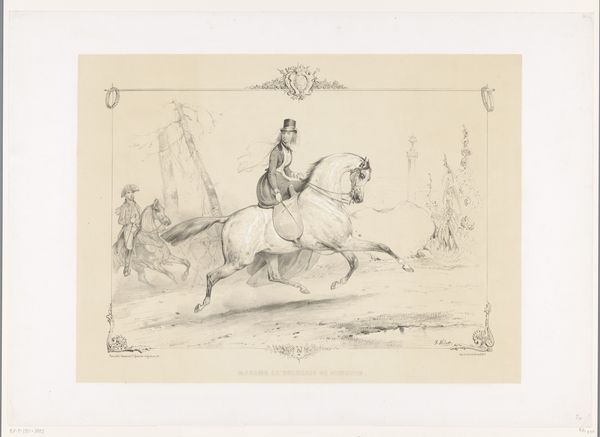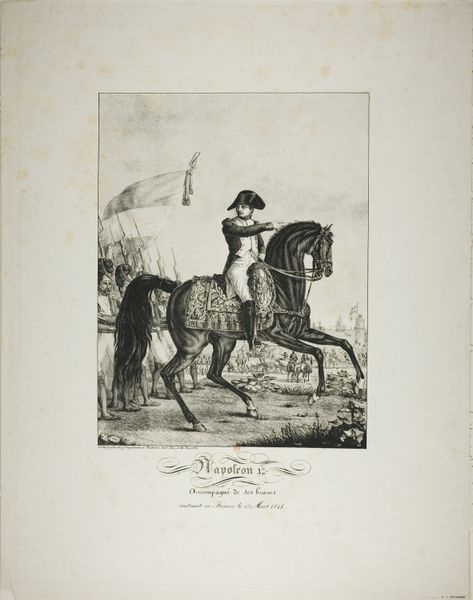
Dimensions: 363 × 310 mm (image); 385 × 310 mm (plate); 550 × 430 mm (sheet, folded at top and bottom)
Copyright: Public Domain
Editor: Here we have Goya’s etching, “Philip III,” from 1778. It’s quite striking how the delicacy of the etching gives such a sense of power to this regal figure on horseback. What can you tell me about how history informs this work? Curator: Goya created this print fairly early in his career, and it's based on an earlier painting. Reproducing historical portraits like this served a very important function, beyond simply depicting the king. The medium of printmaking made images more widely accessible. Editor: So it’s a way to circulate power, visually? Curator: Exactly. Consider where this was displayed – perhaps in public spaces, or even private homes. Think about who would have had access to it, and how this might have shaped their perception of the monarchy and the social hierarchy. Do you see anything in the composition that reinforces that power dynamic? Editor: Well, the horse rearing up makes the rider seem even taller and more imposing. Plus the vast landscape behind him suggests he presides over a large territory. Curator: Precisely. Goya uses visual cues to perpetuate a specific idea of the monarchy for the viewer. Even details such as his clothing, or the horse’s ornamentation, serve to reinforce his elevated position. In choosing to reproduce an image of a previous monarch, and through its dissemination as a print, Goya is really participating in shaping and cementing the narrative of Spanish royalty. Editor: That’s a perspective I hadn't considered before! It's amazing to realize how art plays a direct role in crafting those historical narratives. Curator: It really does. Understanding art means considering who controls the image and why, it becomes much more meaningful.
Comments
No comments
Be the first to comment and join the conversation on the ultimate creative platform.
